Electricity is a serious and dangerous matter, but many works do not require high qualifications and can be made independently without attracting specialists. For example, you can connect an electric stove with only distant ideas about electricity. Especially if the socket is already mounted. All that remains is to install the plug on the cord and connect it correctly to the stove connectors. It is worse if it is necessary to pull the line from the shield, but here you can cope without help. Just remember that all the work is made when the power supply is disconnected.
Scheme and Methods of Connection
Electric household plates - powerful equipment consumed by the current of about 40-50 A. This means that it is necessary to connect the electric stove to the dedicated power line. It should be powered directly from the apartment or house shield. Power is supplied via the RCD and the protective machine. The stove itself can be connected through a socket and fork (special power), terminal box. Also, the line from the machine can directly start on the input terminals on the rear wall.

Electrical connection circuit
A more reliable connection is directly to the input terminals of the plate. In this case, there is a minimum number of contact points, which increases reliability. But this method is not entirely convenient: it is possible to turn off the power supply can only automatically. Approximately the same problem and when using a terminal box, with the only difference that the points of the connection is greater.
Most often use the connection using a socket and forks. It is more convenient and habitual. Since the equipment is powerful, not ordinary household devices, but special, which are also called the power - for their ability to withstand significant current loads.
Please note that when connecting powerful electrical equipment, it is necessary to ground. Without it, you will be refused in warranty repair, and his absence is dangerous for life, so it's better not to risk.
Electrical parameters and ratings of protection machines
As they found out, separate UzOs and a protective automatic machine must be installed in the switchboard. Through them are served phase on the socket. This pair can be replaced by a rattomatom. These are the same two devices, but in one case. Minus takes from a common tire, passes through the Uzo, grounding is taken with the appropriate tire.
Article on the topic: Wallpaper mustard colors in the interior of the room
Nominal car machine Selects the maximum current consumed. This data is in the passport of electric stoves and are usually within 40-50 A. In this range, the denominations go with a big step - 40 A, 50 A, 63 A. Choose the nearest more close - so less chances for a false shutdown when working at full power . That is, if the claimed maximum current consumption is 42-43 A, still take the machine gun on 50 A.
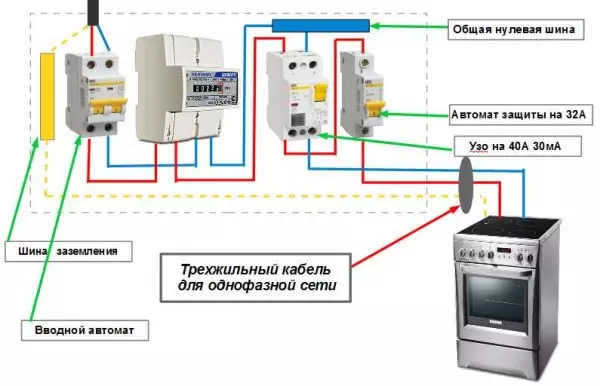
Electrical connection circuit
On the other hand, completely all the burners and oven, and even at full capacity, may never turn on, and more powerful automata are decently more expensive. You can choose to you.
Nominal Uzo. Take a step higher than that of the machine. If you decide to put a 50 A automatic machine, then the Uzo is required by 63 A, the leakage current is 30 mA.
Wire and its parameters
In recent years, copper conductors are most often used when laying electrical wiring and connecting household appliances. Although they are much more standing, but it is more convenient to work with them, besides, the copper requires the diameter for a much smaller than when using aluminum conductors.
Select the conductor cross section depending on the type of network - 220 V or 380 V, the type of wiring gasket (open / closed) as well as from the current consumed or the power of the equipment. Usually use copper conductors with residential 4 mm (with a line length to 12 m) or 6 mm.
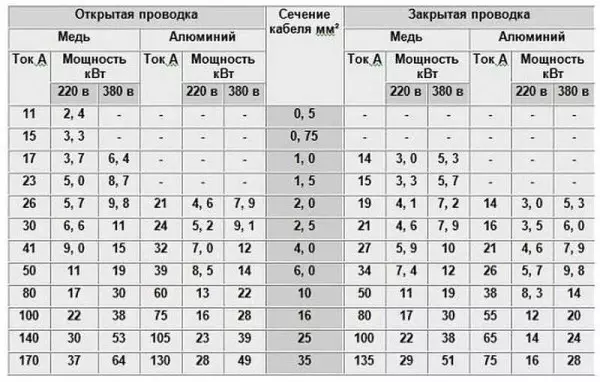
Conductor section selection table
When choosing a type of cable for laying from a shield to a socket, it is better to stop on single-core conductors. They, though more stringent, but more reliable. To connect the slab itself (to which the power plug will need to be connected), you can choose a flexible stranded wire: the single-core in this case will be too uncomfortable.
Article on the topic: Metric for newborn cross-strokes Schemes: download free child, Boy Boy and Girls, Date
Connecting the cooking panel is painted here.
How to connect the electric stove to the 220 V network
All the above schemes were precisely for a single-phase network 220 V. To connect, you need a three-in-room cable, three-contact power socket and a fork with a rated current of at least 32 A. Immediately, we immediately say that the connection of equipment of different brands does not differ in principle. No matter what slate you purchased - Electrolux, Gorenje, Bosh, Beko. No difference. All difference is the different design of the covers that close the terminal box on the case and the different methods of its attachment. Everything else is similar.Cable connection to electric stove
First, the cable selected to connect must be connected to the electric stove. On the back panel, usually at the bottom of the left there is a terminal block to which conductors are derived.
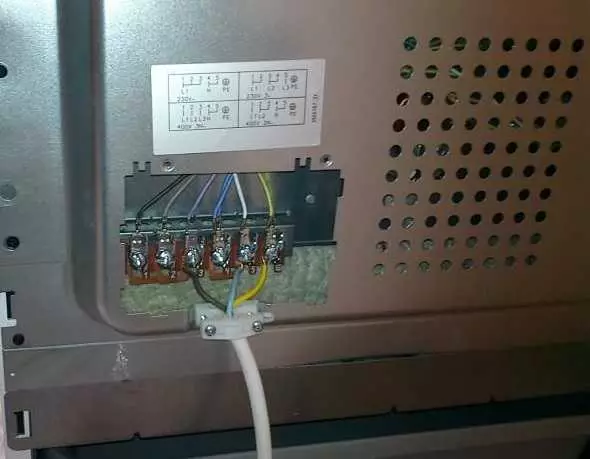
Terminal block to which the electric cord must be connected
Nearby are connecting schemes for different networks.
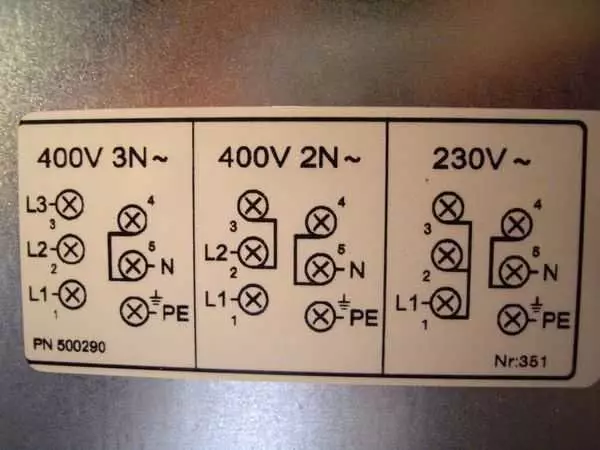
Sketchy connection image for different networks
With a 220 network in the circuit of the extreme right. On the stove should be connected by one jumper Contacts 1,2,3 - it will be a phase (red or brown conductors), the second - contacts 4 and 5 are neutral or zero (blue or blue), the sixth contact is ground (green or yellow -green). From the store, the eletclocks usually come with already installed jumpers, but does not interfere with check.
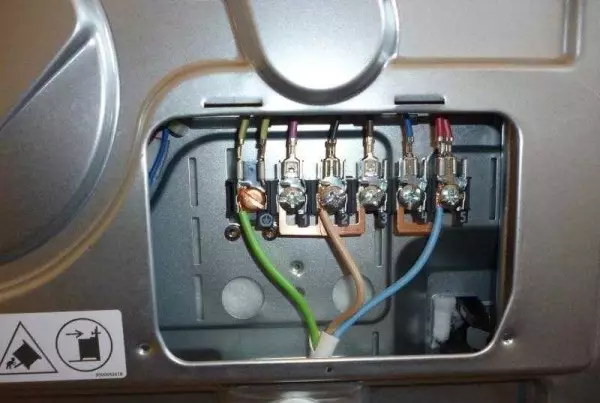
Cable connection to electric stove
It is more correct and more reliable conductors to clipped with contact plates, and then connect them. Such a connection is more reliable, but often just the conductors spin around the clamping screw and then tighten it. In any case, the color marking is better to observe - so less chances to make a mistake.
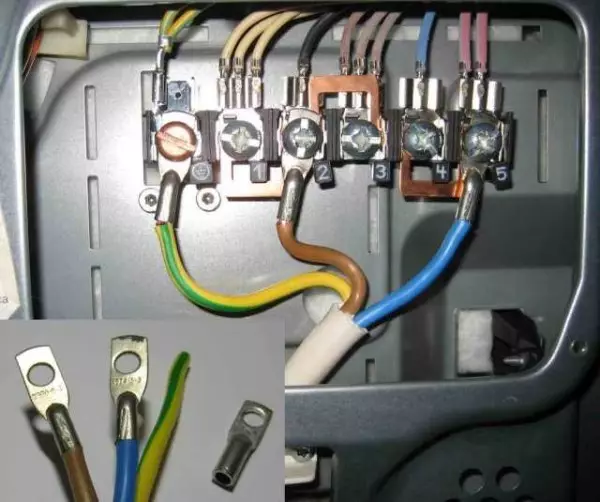
Better conductors seek contact plates
Installing fork
Next to the cable connect the plug. Power plug - collapsible. Remove the two fastening screws, remove the cover with the contacts. Also removed the fixing bar, which holds the cable. With the edge of the flexible cable (approximately 5-6 cm), protective insulation is removed, the conductors are straightened, their ends are also cleaned with an insulation by about 1.5-2 cm. The end of the cable is started into the fork housing.
Article on the topic: Decorative plasterboard falsecart
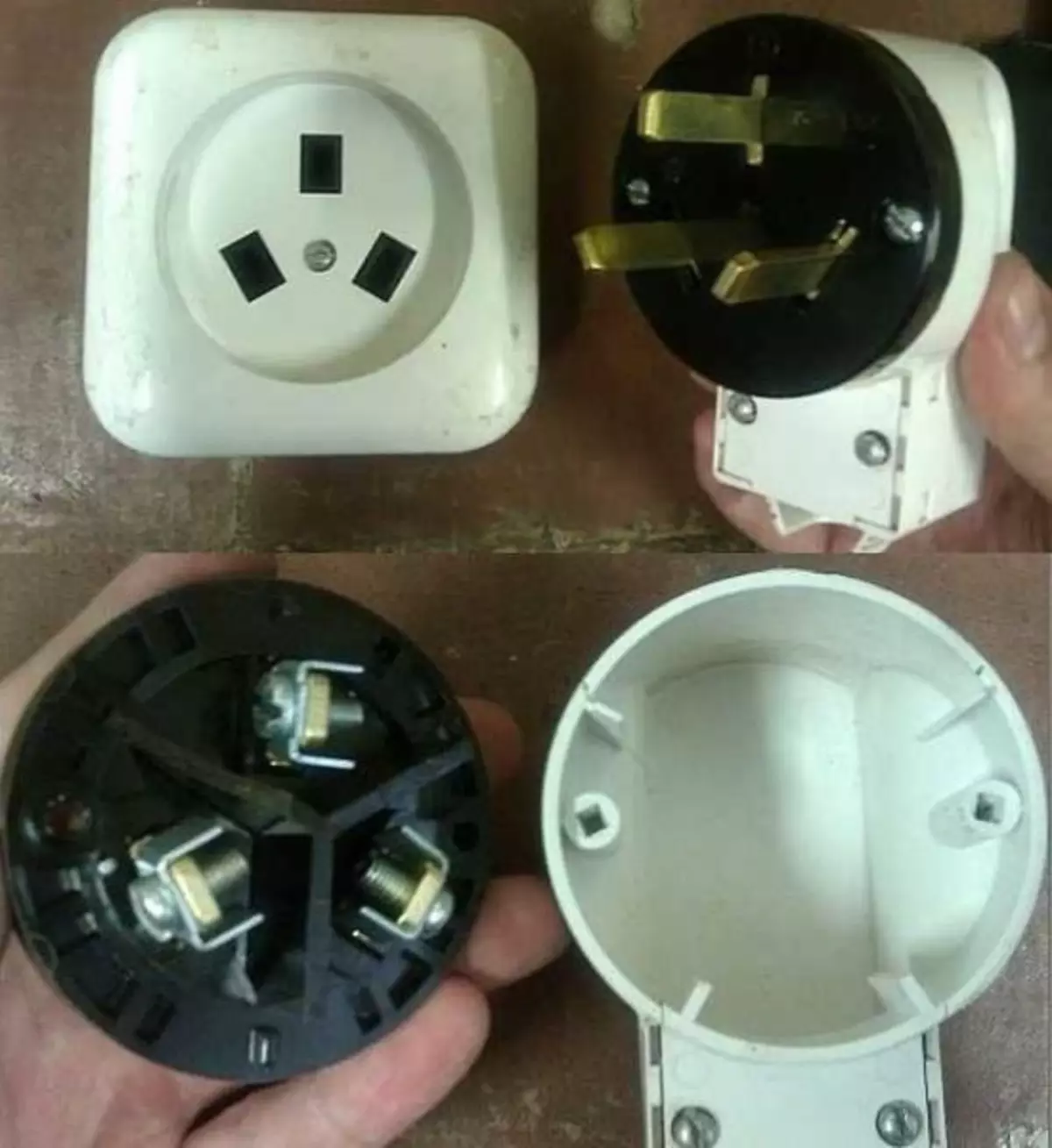
So the plug for connecting the electric stove looks
The clamping screws on the contacts weaken, the conductors, if they are stranded, twisted in the harness. These flagellas are spinning around the contacts, tighten with clamping screws.
The distribution of conductors matters and connect them carefully. The top contact forks is usually signed - they connect the "earth" wire (green). When connecting the socket, it is necessary to submit to a similar connector.
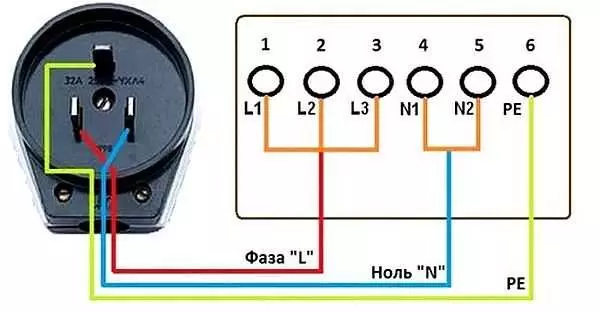
Connecting wire to electric stove
Two other contacts are the "phase" and "zero". Which one to serve - it does not matter, but when connecting the "phase" socket, it should fall on the "phase", "zero" to "zero". Otherwise there will be a short circuit. So before turning on, be sure to check again, the wires (phase and zero) are screwed correctly.
How to determine the phase in the installed outlet
If you have already stood the electric stove, and there is a socket, it is necessary to find in it, where the ground is located, phase and zero and connect the wires in the fork. To determine the easiest way to use the voltage indicator in the form of a screwdriver. It works simply - install the indicator in the place of the intended phase, and look at the LED mounted in the case. If it is burning, it means there is a voltage and this is a phase. If there are no voltages, the LED does not light up, and this is zero.It is even easier to identify the land: it's contact at the top or bottom.
Connecting to three-phase network 380 V
In this case, the automatic and the Uzo for the three-phase network are bought, the wires must be five-tier (the section is determined by the same table, only the value is necessary in the column 380 V). Fork and socket should also have five contacts.
The connection process itself will not differ by anything, only by the number of wires. The difference will be when the wire is connected to the output terminals of the electric stove. Only one jumper will be installed - on contacts 5 and 6. All other are connected to individual conductors.
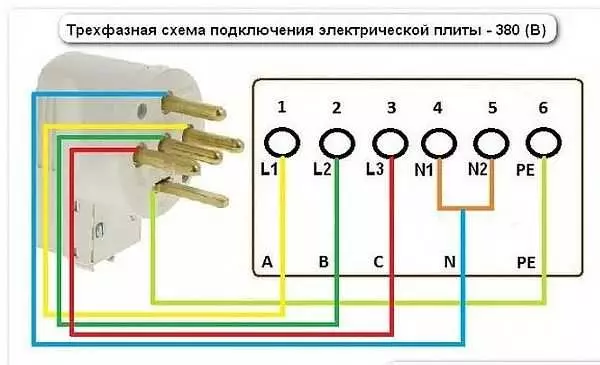
Connection diagram of electric stove to three-phase network
It is also necessary to track the position of the "land" and "neutral" (or they say also "zero"). The color matching of conductors on the phases is noncritical, but more convenient if they also coincide.
